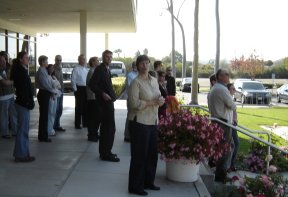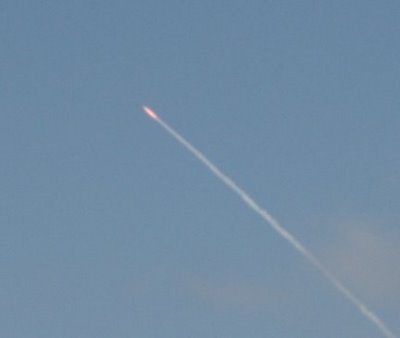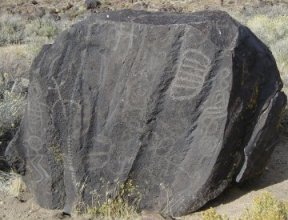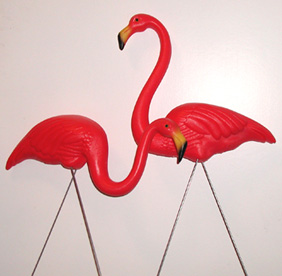 One of the interesting things about living here in Santa Barbara is the fact that occasionally you can see satellite launches from Vandenberg Air Force Base, located about 40 miles northwest of us. The US launches satellites from two facilities: Vandenberg, where the launches go south over the Pacific, generally for payloads with polar orbits; and Cape Canaveral, where the launches go east over the Atlantic, generally for payloads that need equatorial orbits.
One of the interesting things about living here in Santa Barbara is the fact that occasionally you can see satellite launches from Vandenberg Air Force Base, located about 40 miles northwest of us. The US launches satellites from two facilities: Vandenberg, where the launches go south over the Pacific, generally for payloads with polar orbits; and Cape Canaveral, where the launches go east over the Atlantic, generally for payloads that need equatorial orbits.
Under the right conditions, they can be seen for a long way. Probably the most striking view I have had of a Vandenberg launch, was about 10 years ago, actually before we moved here. It was just after dusk and we were attending one of Travis’ Little League baseball games in Palmdale. That’s about 140 miles away from Vandenberg. You could clearly see the flaming exhaust and two distinct stage separations. The game stopped as everyone stared at the big fireworks.
I had almost forgotten about the pictures I’m showing here of a launch that took place almost exactly a year ago. Normally we don’t get any advance warning of these, but this was a unique event, the launch of the very last Titan IV. My employer has employees seconded at the base, and they gave us the heads up. That’s a group of my co-workers on the west porch of our building waiting for the show.
 This shot shows pretty much what the view was like to the naked eye. We are facing west and you can see the Titan headed south. You can get some idea of the scale from the tree in the foreground. We were far enough away that there was no sound at all. In towns like Lompoc and Guadalupe that are closer to the base, these guys rattle windows.
This shot shows pretty much what the view was like to the naked eye. We are facing west and you can see the Titan headed south. You can get some idea of the scale from the tree in the foreground. We were far enough away that there was no sound at all. In towns like Lompoc and Guadalupe that are closer to the base, these guys rattle windows.
We saw later in the news that this launch had a classified payload. Nice euphemism for spy satellite.
 This is about the limit of my little point-and-shoot’s telephoto. You can clearly see the flames out of the rear of the first stage.
This is about the limit of my little point-and-shoot’s telephoto. You can clearly see the flames out of the rear of the first stage.
 This was taken after the first stage separation. You can see that the first stage has fallen away, and is no longer firing. Daytime launches don’t put on quite the show that night launches do.
This was taken after the first stage separation. You can see that the first stage has fallen away, and is no longer firing. Daytime launches don’t put on quite the show that night launches do.
 I wish I could say that I took this picture, but must admit I borrowed it from the LA Times. I did witness the launch however, which took place one evening during the summer of last year. Connie and I were walking on the beach and saw it go up. Of course I had no camera with me. It was a spectacular display, and this shot is a good representation of what it looked like.
I wish I could say that I took this picture, but must admit I borrowed it from the LA Times. I did witness the launch however, which took place one evening during the summer of last year. Connie and I were walking on the beach and saw it go up. Of course I had no camera with me. It was a spectacular display, and this shot is a good representation of what it looked like.














